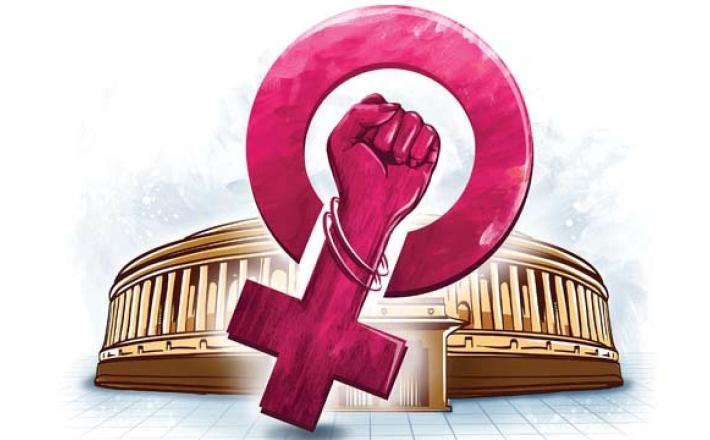Women and politics: women voters are higher than men but why is female representation in politics still low
Source: Feminism in India
Women representation in Indian politics has always been a cause of concern. Despite being accountable for 49% of the country’s population, their representation in political participation is extremely poor. The representation of women in Parliament and in decision making roles in public sphere is one of the key indicators of empowerment.
As per the report Women in Politics 2017 (IPU and UN), Lok Sabha had 64 women MPs (11.8 percent of 542 MPs) and Rajya Sabha had 27 (11 percent of 245 MPs). According to Ministry of Statistics and Programme Implementation, as on October 2016, out of the total 4118 members of legislative assemblies (MLAs) across the country, only 9 percent were women. Among the State assemblies, the highest percentage of women MLAs were from Bihar, Haryana and Rajasthan with 14 per cent followed by Madhya Pradesh and West Bengal with 13 per cent and Punjab with 12 per cent.
OUT OF THE TOTAL 4118 MLAS ACROSS THE COUNTRY, ONLY 9 PERCENT WERE WOMEN.
However, the recent elections have seen a very positive change in these statistics. In many constituencies of Chhattisgarh, Madhya Pradesh and Mizoram, women voters have outnumbered men. According to a report published by Economic Times there is a 4% jump in women voting in MP from 70.11% in 2013 to 74.03%, while for men it on rose from 73.95% to 75.98% amounting to a 2% rise. When it comes to Chhattisgarh, women voters were reported higher than men in 24 seats out of 90 constituencies, which amount to 30% of the entire constituencies.
Click here to read the full article published by Feminism in India on 18 December 2018.

Women representation in Indian politics has always been a cause of concern. Despite being accountable for 49% of the country’s population, their representation in political participation is extremely poor. The representation of women in Parliament and in decision making roles in public sphere is one of the key indicators of empowerment.
As per the report Women in Politics 2017 (IPU and UN), Lok Sabha had 64 women MPs (11.8 percent of 542 MPs) and Rajya Sabha had 27 (11 percent of 245 MPs). According to Ministry of Statistics and Programme Implementation, as on October 2016, out of the total 4118 members of legislative assemblies (MLAs) across the country, only 9 percent were women. Among the State assemblies, the highest percentage of women MLAs were from Bihar, Haryana and Rajasthan with 14 per cent followed by Madhya Pradesh and West Bengal with 13 per cent and Punjab with 12 per cent.
OUT OF THE TOTAL 4118 MLAS ACROSS THE COUNTRY, ONLY 9 PERCENT WERE WOMEN.
However, the recent elections have seen a very positive change in these statistics. In many constituencies of Chhattisgarh, Madhya Pradesh and Mizoram, women voters have outnumbered men. According to a report published by Economic Times there is a 4% jump in women voting in MP from 70.11% in 2013 to 74.03%, while for men it on rose from 73.95% to 75.98% amounting to a 2% rise. When it comes to Chhattisgarh, women voters were reported higher than men in 24 seats out of 90 constituencies, which amount to 30% of the entire constituencies.
Click here to read the full article published by Feminism in India on 18 December 2018.